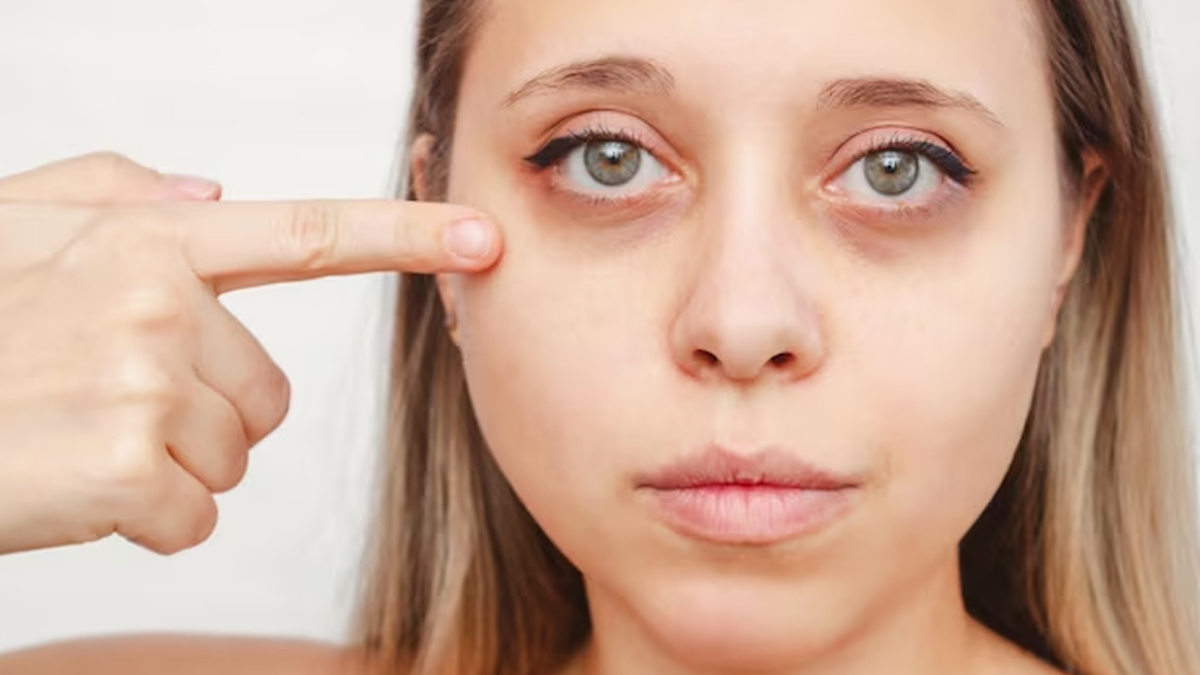
Have you ever looked in the mirror and noticed a slight change in the colour of your eyes? Eye discolouration, whether it's the sclera (the white part of the eye), the iris (the coloured part), or the surrounding areas, can offer significant insights into a person's overall health. Changes in the colour of your eyes can be subtle or obvious, and understanding their implications can be crucial for early diagnosis and treatment of underlying conditions. We spoke to our expert Dr Komal Sangoi, Cornea, cataract and refractive surgeon Wockhardt Hospitals, Mumbai Central, who explained eye discolouration and what it indicates about your health.
Table of Content:-
What Does Eye Discolouration Tell You About Your Health?
1. Yellowing of the Sclera (Jaundice)

One of the most noticeable changes is the yellowing of the sclera, known as jaundice. This condition can be an indicator of liver problems, such as hepatitis, cirrhosis, or liver disease. Jaundice arises when bilirubin, a yellow pigment produced during the breakdown of red blood cells, accumulates in the blood. It can also be a sign of gallbladder issues or pancreatic disorders, said Dr Sangoi. If you notice a yellowish tint in the whites of your eyes, it is essential to consult a healthcare provider for a thorough evaluation.
2. Red or Bloodshot Eyes
Red or bloodshot eyes can be caused by a variety of factors. “It is commonly the result of irritation or dryness, often from extended screen use or exposure to allergens. However, persistent redness can also indicate more serious conditions, such as conjunctivitis (pink eye), uveitis (inflammation of the middle eye layer), or even glaucoma,” said Dr Sangoi. In some cases, it may signal high blood pressure or a ruptured blood vessel. If redness is accompanied by pain, changes in vision, or discharge, it is important to seek medical attention promptly.
According to the American Academy of Ophthalmology (AAO), bloodshot eyes are typically caused by the dilation of tiny blood vessels in the conjunctiva. This condition often arises from fatigue, allergies, dry eyes, exposure to smoke, or irritation from contact lenses.
Also Read: Evaporative Dry Eye: Expert Explains Its Causes, Symptoms, And Treatment
3. Dark Circles or Shadows

“Dark circles around the eyes are commonly associated with fatigue, lack of sleep, or stress. However, they can also indicate underlying health issues, such as allergies, eczema, or sinus problems,” said Dr Sangoi. Chronic dark circles might also suggest nutritional deficiencies or more serious conditions like kidney disease. Ensuring adequate rest, hydration, and addressing allergies can help, but persistent dark circles warrant a discussion with a healthcare provider to rule out serious conditions.
4. Pale or Ashen Eyes
Paleness or an ashen hue in the eyes might be linked to anaemia or poor circulation. Anaemia occurs when the body lacks enough healthy red blood cells to carry adequate oxygen to tissues, causing a general paleness in the skin and eyes. This condition can be due to various factors, including nutritional deficiencies, chronic diseases, or blood loss. If you experience pale eyes along with fatigue or weakness, a blood test might be necessary to determine the cause.
Also Read: Eye Drops Or Laser Surgery? Expert Explains Which Is A Better Treatment For Glaucoma

5. Colour Changes in the Cornea
A cloudy or opaque cornea can indicate corneal dystrophy, metabolic diseases or drug deposits and if associated with redness, pain and watering can indicate corneal decompensation or infection and it needs to be examined immediately by an ophthalmologist.
6. Brown or Gray Spots on the Iris
“The appearance of brown or grey spots on the iris can be a sign of various conditions. For instance, a brown spot might be a freckle or mole, but if it changes in size or colour, it could indicate a more serious issue like melanoma, a type of eye cancer,” warned Dr Sangoi. Grey or blue rings around the cornea, known as a Kayser-Fleischer ring, can be associated with Wilson’s disease, a genetic disorder that leads to copper accumulation in the body. Any noticeable changes in the iris should be evaluated by an ophthalmologist.
Bottomline
Dr Sangoi concluded, “Eye discolouration can provide valuable clues about your health, but it's important to consider these changes in the context of overall symptoms and medical history. While some colour changes might be benign and related to temporary conditions, others could indicate serious underlying health issues. Regular eye examinations and consultations with healthcare professionals are essential for maintaining eye health and addressing any concerns that arise from changes in eye colour. If you notice any unusual or persistent discolouration, seek medical advice to ensure timely diagnosis and appropriate treatment.”
[Disclaimer: This article contains information provided by an expert and is for informational purposes only. Hence, we advise you to consult your own professional if you are dealing with any health issues to avoid complications.]
Also watch this video
How we keep this article up to date:
We work with experts and keep a close eye on the latest in health and wellness. Whenever there is a new research or helpful information, we update our articles with accurate and useful advice.
Current Version
